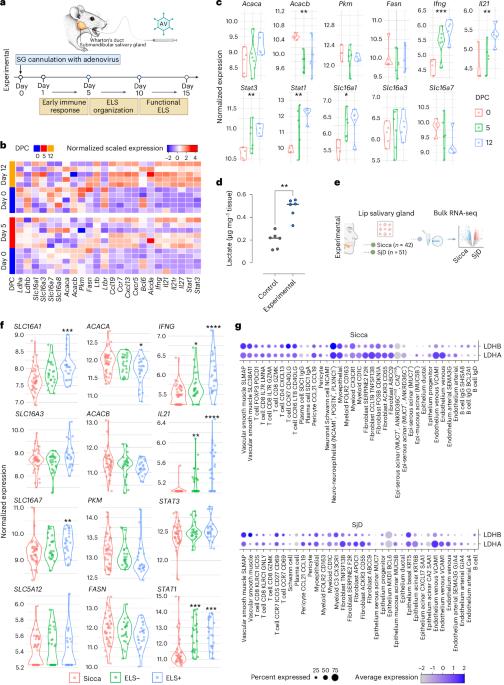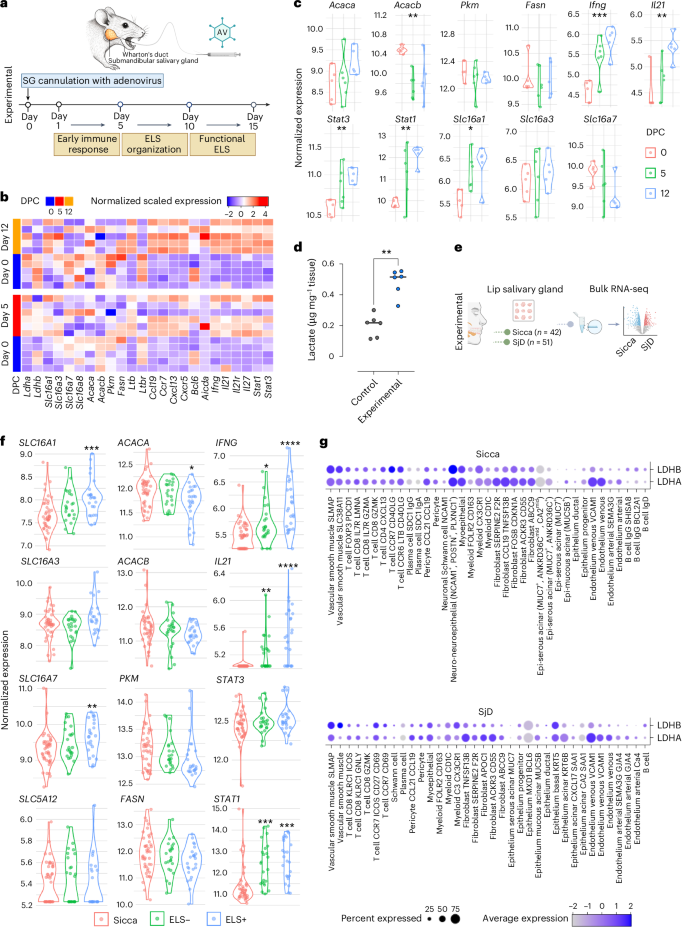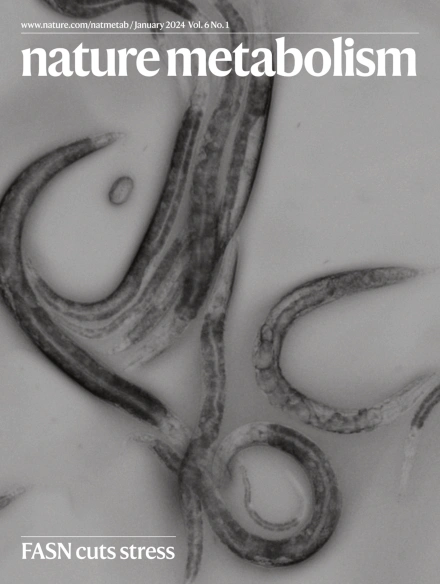乳酸信号传导导致免疫炎症热点聚集,SLC5A12阻断促进其解决
IF 20.8
1区 医学
Q1 ENDOCRINOLOGY & METABOLISM
引用次数: 0
摘要
异位淋巴样结构(ELS)是淋巴样细胞的聚集体,通常在自身免疫性疾病、癌症、传染病和心血管疾病患者的炎症组织中形成。这些结构通过B细胞和T细胞的共同刺激驱动B细胞成熟为记忆B细胞和浆细胞,它们在发病机制中的作用越来越被认识到。了解ELS如何在炎症组织中发展和持续,对于阐明它们在疾病中发挥重要作用的发病机制和治疗反应至关重要。在这里,我们发现代谢途径和特定代谢物,特别是乳酸,是Sjögren病(SjD)中ELS组织的主要调节因子,SjD是第二常见的自身免疫性风湿病。此外,乳酸转运体对乳酸摄取的抑制,特别是通过SLC5A12阻断,是自身免疫性炎症疾病中一个以前未被重视的检查点。这种方法产生了多维的促分辨率效应,包括降低炎症细胞因子水平,增强T细胞从炎症部位的输出,减少T细胞和B细胞区域及其在ELS内的分离。本文章由计算机程序翻译,如有差异,请以英文原文为准。


Lactate signalling leads to aggregation of immune-inflammatory hotspots and SLC5A12 blockade promotes their resolution
Ectopic lymphoid structures (ELS) are aggregates of lymphoid cells that often form within inflamed tissues in patients with autoimmune diseases, cancer, infectious diseases and cardiovascular conditions. These structures drive B cell maturation into memory B cells and plasma cells through B cell and T cell co-stimulation, and their role in pathogenesis is increasingly recognized. Understanding how ELS develop and persist in inflamed tissues is essential for elucidating the pathogenesis and treatment responses in diseases in which they have a prominent role. Here we show that metabolic pathways and specific metabolites, in particular lactate, are master regulators of ELS organization in Sjögren’s disease (SjD), the second-most common autoimmune rheumatic disease. Furthermore, inhibiting lactate uptake by lactate transporters, specifically by SLC5A12 blockade, represents a previously unappreciated checkpoint in autoimmune inflammatory diseases. This approach results in multidimensional pro-resolution effects, including reduced inflammatory cytokine levels, enhanced T cell egress from inflamed sites and diminished T cell and B cell areas and their segregation within ELS. Certo, Pontarini et al. provide insight into the metabolic requirements of ectopic lymphoid structure (ELS) assembly in the context of autoimmunity, and show that blocking lactate uptake by SLC5A12 offers therapeutic benefits in a mouse model of Sjögren’s disease.
求助全文
通过发布文献求助,成功后即可免费获取论文全文。
去求助
来源期刊

Nature metabolism
ENDOCRINOLOGY & METABOLISM-
CiteScore
27.50
自引率
2.40%
发文量
170
期刊介绍:
Nature Metabolism is a peer-reviewed scientific journal that covers a broad range of topics in metabolism research. It aims to advance the understanding of metabolic and homeostatic processes at a cellular and physiological level. The journal publishes research from various fields, including fundamental cell biology, basic biomedical and translational research, and integrative physiology. It focuses on how cellular metabolism affects cellular function, the physiology and homeostasis of organs and tissues, and the regulation of organismal energy homeostasis. It also investigates the molecular pathophysiology of metabolic diseases such as diabetes and obesity, as well as their treatment. Nature Metabolism follows the standards of other Nature-branded journals, with a dedicated team of professional editors, rigorous peer-review process, high standards of copy-editing and production, swift publication, and editorial independence. The journal has a high impact factor, has a certain influence in the international area, and is deeply concerned and cited by the majority of scholars.
 求助内容:
求助内容: 应助结果提醒方式:
应助结果提醒方式:


